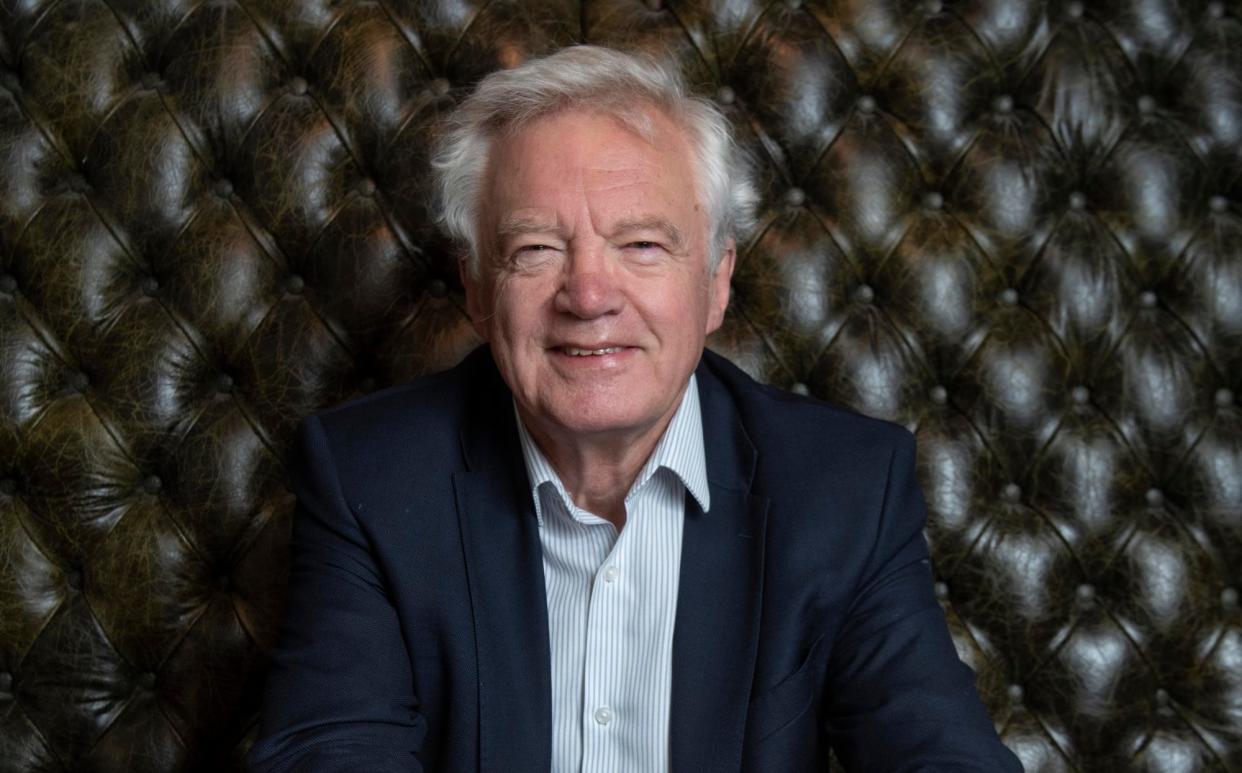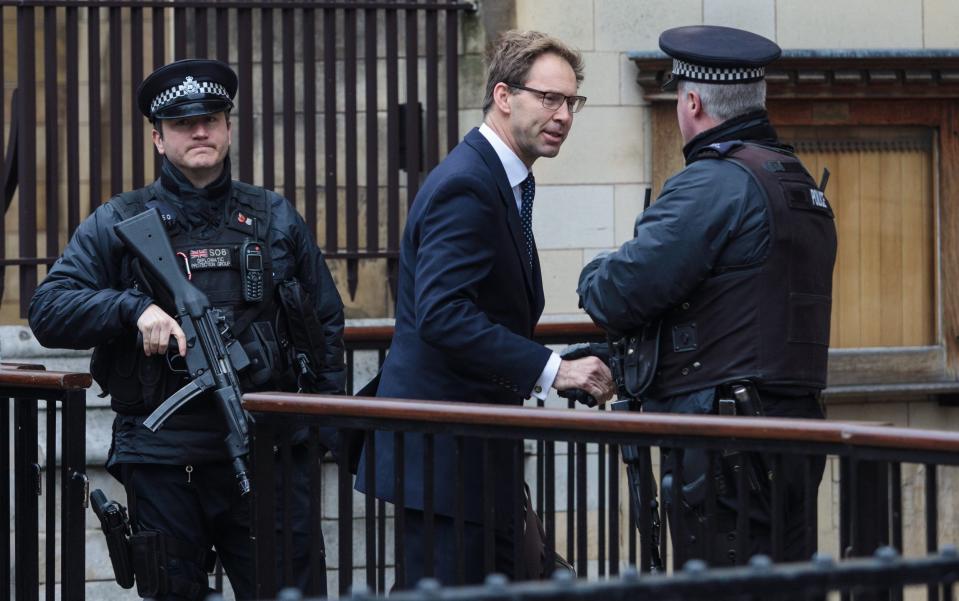What David Davis’s rescue of a homeless man shows us about the ‘bystander effect’

- Oops!Something went wrong.Please try again later.
- Oops!Something went wrong.Please try again later.
You may have heard of the “bystander effect” – the phenomenon in which people stand by and watch in an emergency, rather than step in to help, if others are present. “Bystander intervention” is a term less commonly thrown around, and yet we all love a story of a have-a-go hero.
In 2007, there was off-duty baggage handler John Smeaton, who became an overnight sensation when he helped foil a terror attack on Glasgow Airport by tackling one of the suspects. In 2017, there was Gerald Vowls, who risked his life to distract terrorists during the London Bridge attack. They are among the most high profile – and most high stakes – interventions in recent years, but they’re by no means isolated examples.
While righteous horror was the correct response to last month’s story of bystanders who stood and watched a man struggling not to drown in the River Ouse in York – instead of throwing him a lifebelt – we haven’t seen the last of the have-a-go heroes. Even in the smartphone age, when the instinct of many onlookers seems to be to pull out their mobiles and film a situation, rather than getting involved.
We can now add to the list of intervening bystanders the former Brexit secretary David Davis, who told this week of how he defended a rough sleeper from an attack near Parliament.
The Conservative MP for Haltemprice and Howden, who trained with the SAS before starting his political career, saw a “spray of blood” as the attackers kicked the man’s head at around 11pm on Great Peter Street, Westminster, on Tuesday.
“I had to get between them, be very aggressive,” said the 74-year-old politician, “one of them took a couple of swings at me and I had to deal with that, slightly manhandle him.” He then let the victim, named Gareth, spend the night on his sofa in his Westminster flat, and took him to St. Thomas’ hospital the following morning because he was still bleeding.
His heroics are not the first example of bystander intervention by a politician. Former Conservative defence minister Tobias Ellwood, an Army reservist, was hailed for attempting to save the life of Pc Keith Palmer during a terror attack in Westminster in 2017.

Boris Johnson won’t be best remembered for this, but when mayor of London in 2009 he stepped in to help the film director Franny Armstrong when he spotted a gang of girls surrounding her, brandishing an iron bar.
In retrospect, these interventionist actions almost always reflect well on he or she who rolled up their sleeves and got involved.
But advice on how to respond in emergency situations can be confusing. Is it best to get stuck in and do what you can? To call the emergency services and wait for the professionals to deal with it? To record documentary evidence of what’s happening, not in the hope of going viral, but because it could – as in the case of the 2020 murder of George Floyd by a policeman in Minneapolis, which was filmed by then 17-year-old Darnella Frazier – draw the world’s attention to wrongdoing?
Even the advice issued by Transport for London changes depending on the emergency. If you see something that doesn’t look right, and that thing may be terrorism, you are asked to speak to staff or text British Transport Police. But if the thing that doesn’t look right is suspected sexual harassment, you’re advised to make a distraction by asking the person being targeted a simple question, such as “What’s the next stop?”, make a note of the incident and make sure the person being harassed is alright.
I ask the Metropolitan Police how members of the public should respond if they see something occurring in front of them, acknowledging that the answer may be context-dependent. A spokesman says: “It’s not for us to issue guidance on such an issue.” What is clear is that context is key, and complicated: last week 37-year-old Ryan Johnston was sentenced to nine years in prison for raping an unconscious woman in front of other passengers on a Piccadilly Line train. The fact that none of those passengers intervened prompted outcry, though a French national travelling with his 11-year-old son witnessed the attack and reported it to the police, and returned to Britain to provide the evidence that secured a conviction.
The University of Cambridge is more forthcoming with advice on intervention, telling students on its website that “bystanders play a key role in preventing, discouraging, and/or intervening when an act of violence has the potential to occur”.
It recommends the ABC approach: assess for safety and never put yourself at risk; be in a group as it’s safer to call out behaviour or intervene if others are present; and care for the victim.
The homelessness charity Crisis stops short of urging bystanders to emulate Davis if they witness violence against a rough sleeper, but asks them to report the incident. It also calls on Davis’s party to change its plans for dealing with rough sleepers.
“It is deeply distressing, yet sadly unsurprising, that we’re seeing more reports of people rough sleeping being attacked and abused,” says Matt Downie, Crisis chief executive. “We hear stories like this day after day – people who have been kicked, punched or had things thrown at them, simply because they do not have a home. If anyone witnesses someone being attacked while rough sleeping, then it’s vital that they call an emergency service such as the police or ambulance.”
The psychology of bystander intervention
By Dr Louise Goddard-Crawley, a clinical psychologist
When David Davis intervened in an attack on a homeless man earlier this week, he defied the psychological norms of the “bystander effect”. This phenomenon, first explored by psychologists Bibb Latané and John Darley in the 1960s, suggests that people are less likely to help in emergencies when others are around. However, Davis’s actions paint a different picture.
This incident serves as a fascinating case study for psychologists examining the dynamics of intervention in crisis situations; his response challenging the notion that people might freeze or hesitate when faced with an emergency, especially in the presence of others.
When exploring why certain individuals choose to intervene during a nearby attack, various factors come into play.
High levels of empathy and personal responsibility are often present in those individuals; a strong moral compass, a history of helping behaviour, or a sense of duty may also make people more inclined to step in.
Intervention tendencies are not strictly tied to demographic factors like gender or ethnicity. People from diverse backgrounds, including white men, women, or those in authority positions such as teachers, can exhibit interventionist behaviour. Other kinds of professions also make people more likely to volunteer in a time of crisis – such as those with a background in emergency response, or first aid training.
The presence of children or a watching crowd, meanwhile, can have varying effects. On one hand, individuals may feel a greater sense of responsibility when children are present, motivating them to act. On the other, it can contribute to the diffusion of responsibility, as each individual assumes someone else will get involved. The fear of judgement or hesitation due to the pressure of a watching crowd can also affect the decisions taken by bystanders.
One can only hope that they can follow Davis’s example, and display compassion in the most challenging of circumstances.

